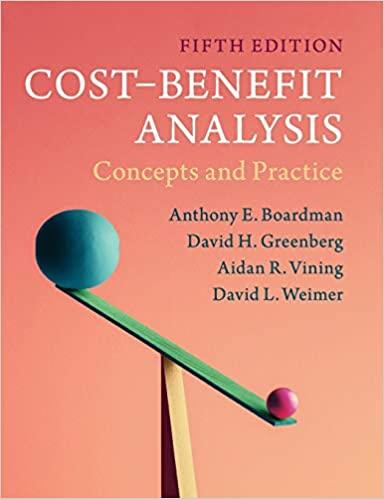





Liverpool Sawmill, Inc., (LSI), purchases logs from independent timber contractors and processes the logs into three types of lumber products. These products are the result of a joint sawmill process that involves removal of bark from the logs, cutting the logs into a workable size (ranging from 8 to 16 feet in length), and then cutting the individual products from the logs. 2(Click the icon to view the joint cost information.) (Click the icon to view the per-unit information.) 4(Click the icon to view additional information.) Read the requirements Requirement 1. Based on the information given for Liverpool Sawmill, allocate the joint processing costs of $1,010,000 to the three products using the (a) Sales value at splitoff method, (b) Physical-measure method (volume in units), and (c) NRV method. a. Begin by allocating the joint processing costs of $1,010,000 to the three products using the Sales value at splitoff method. (Round the weights to four decimal places.) Studs Decorative pieces Posts Total Monthly unit output Selling price per unit Sales value of total production at splitoff Weighting Joint costs allocated b. Based on the information given for Liverpool Sawmill, allocate the joint processing costs of $1,010,000 to the three products using the Physical-measure method (volume in units). (Round the weights to four decimal places.) Studs Decorative pieces Posts Total Physical measure of total production Weighting Joint costs allocated c. Based on the information given for Liverpool Sawmill, allocate the joint processing costs of $1,010,000 to the three products using the NRV method. (Round the weights to four decimal places.) Studs Decorative pieces Posts Total Monthly units of total production Fully processed selling price per unit Net realizable value at splitoff Weighting Joint costs allocated Requirement 2. Prepare an analysis for Liverpool Sawmill that compares processing the decorative pieces further, as it currently does, with selling them as a rough-cut product immediately at splitoff. (Use parentheses or a minus sign for decreases in contribution.) Requirement 2. Prepare an analysis for Liverpool Sawmill that compares processing the decorative pieces further, as it currently does, with selling them as a rough-cut product immediately at splitoff. (Use parentheses or a minus sign for decreases in contribution.) Units Dollars Monthly unit output Less: Normal further processing shrinkage Units available for sale Final sales value Less: Sales value at splitoff Incremental revenue Less: Further processing costs Increase/(decrease) in contribution from further processing Requirement 3. Assume Liverpool Sawmill announced that in six months it will sell the unfinished decorative pieces at splitoff due to increasing competitive pressure. Select three types of likely behavior that will be demonstrated by the skilled labor in the planing-and-sizing process as a result of this announcement. Behavior that may be demonstrated by the skilled labor in the planing-and-sizing process include the following: |(1) (2) (3) Management actions that could improve this behavior include the following: Improve communication by giving the workers: (4) The company can offer incentive bonuses to (5) and align rewards with goals. The company could (6) job relocation and internal job transfers. 1. a. C. Based on the information given for Liverpool Sawmill allocate the joint processing costs of $1,010,000 to the three products using: Sales value at splitoff method b. Physical-measure method (volume in units) NRV method Prepare an analysis for Liverpool Sawmill that compares processing the decorative pieces further, as it currently does, with selling them as a rough-cut product immediately at splitoff. Assume Liverpool Sawmill announced that in 6 months it will sell the unfinished decorative pieces at splitoff due to increasing competitive pressure. Select three types of likely behavior that will be demonstrated by the skilled labor in the planing-and-sizing process as a result of this announcement. How could this behavior be influenced by management? 2. 3. (1) O O higher quality O increased motivation and morale O increasing production O job insecurity, leading to nonproductive employee time looking for jobs elsewhere O lower quality O reduced motivation and morale (2) higher quality O increased motivation and morale O increasing production O job insecurity, leading to nonproductive employee time looking for jobs elsewhere O lower quality O reduced motivation and morale (3) O O higher quality O increased motivation and morale O increasing production O job insecurity, leading to nonproductive employee time looking for jobs elsewhere O lower quality O reduced motivation and morale (4) O a copy of the financial statements to see if they can figure out the reason for the change. O an explanation why the changes occurred to understand the situation and plan for the future operation of the entire plant. O no information so that they will want to keep their jobs at all costs. (5) O decrease costs O increase sales O maintain quality and production O reduce workforce (6) O discourage O forbid O provide The joint process results in the following costs of products for a typical month: Direct materials (rough timber logs) $ 480,000 Debarking (labor and overhead) 50,000 Sizing (labor and overhead) 220,000 Product cutting (labor and overhead) 260,000 $ 1,010,000 Total joint costs Product yields and average sales values on a per-unit basis from the joint process are as follows: Monthly Output of Materials at Fully Processed Product Splitoff Point Selling Price Studs 78,000 units $ 5 Decorative pieces 4,000 units 85 Posts 28,000 units 26 The studs are sold as rough-cut lumber after emerging from the sawmill operation without further processing by Liverpool Sawmill. Also, the posts require no further processing beyond the splitoff point. The decorative pieces must be planed and further sized after emerging from the sawmill. This additional processing costs $90,000 per month and normally results in a loss of 10% of the units entering the process. Without this planing and sizing process, there is still an active intermediate market for the unfinished decorative pieces in which the selling price averages $55 per unit












